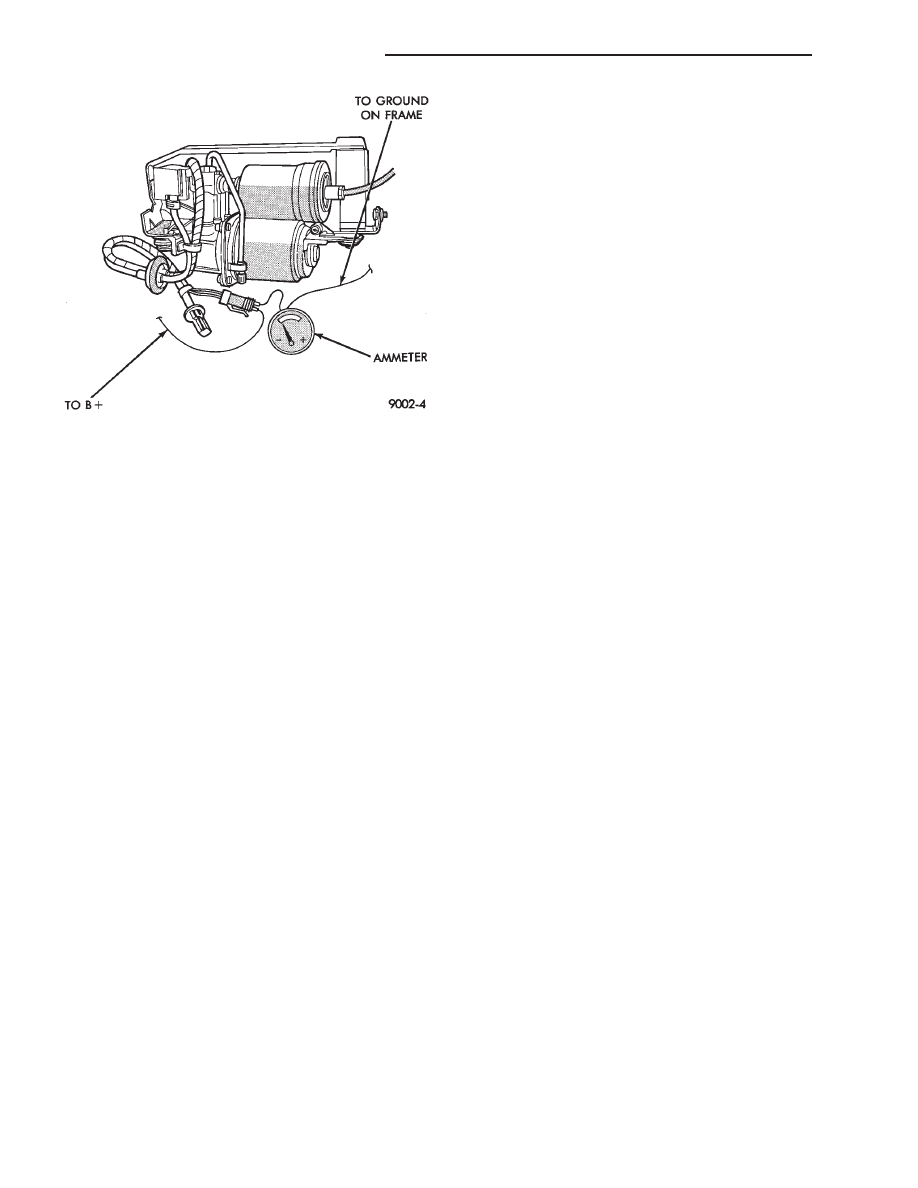Chrysler Le Baron, Dodge Dynasty, Plymouth Acclaim. Manual - part 91

• Air pressure leaks down below 621 kPa (90 psi),
before it remains steady.
• Output pressure builds up to less than 758 kPa
(110 psi) when it stabilizes.
If the compressor is allowed to run during this test
until it reaches its maximum output pressure of 1516
kPa (220 psi). The solenoid exhaust valve will act as
a pressure relief valve. The resulting leak-down, af-
ter the compressor is shut off, will indicate a false
leak.
SERVICE PROCEDURES
COMPRESSOR ASSEMBLY
REMOVAL
(1) Disconnect negative battery cable.
(2) Raise vehicle, see Hoisting, Group 0.
(3) Remove cover from compressor assembly. Re-
move air hose and electrical connectors (Figs. 1 and
2).
(4) Remove compressor assembly mounting bolts
and lower assembly from vehicle.
(5) Remove
mounting
bracket
bolts
and
slide
mounting bracket away from compressor.
INSTALLATION
(1) Slide mounting bracket on compressor and in-
stall bolts and tighten to 8 N
Im (70 in. lbs.) torque.
(2) Install compressor assembly to frame rail and
tighten bolts to 8 N
Im (70 in. lbs.) torque.
(3) Connect air hose and electrical connector to
compressor assembly.
(4) Install
cover
on
compressor
assembly
and
tighten bolts to 8 N
Im (70 in. lbs.) torque.
(5) Lower vehicle and connect negative battery ca-
ble.
(6) Check operation of the system.
Fig. 6 Compressor Current Draw Test
2 - 62
SUSPENSION AND DRIVESHAFTS
Ä